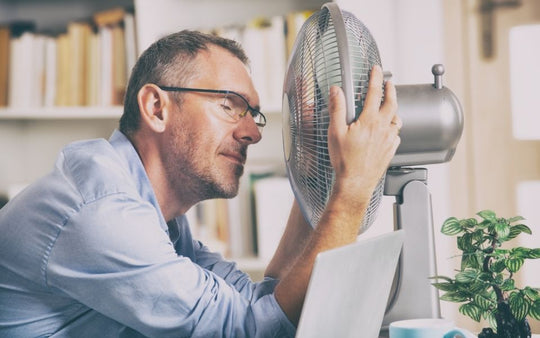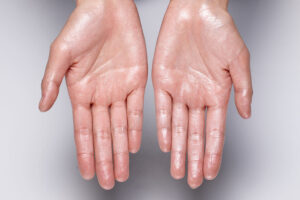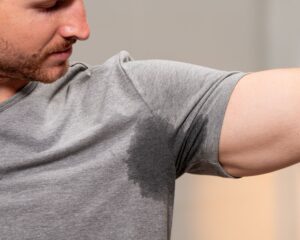Opting for an antiperspirant goes beyond picking a basic hygiene item; it’s about selecting a product grounded in scientific research aimed at managing both sweat and odor as you go about your day.
This article will delve into the workings of antiperspirants, underscoring why it’s essential to comprehend their mechanisms. Doing so not only aids in making well-informed decisions regarding the products you use on yourself but also in appreciating the nuanced relationship between personal hygiene practices and scientific progress.
The Science of Antiperspirants
Your body houses millions of sweat glands, which are activated not only by heat but also by emotions, stress, and physical activity. These glands play a pivotal role in thermoregulation, helping to cool your body down and maintain a stable internal temperature. [1]
Antiperspirants are formulated to interact with these sweat glands directly. The key lies in their active ingredients, usually aluminum-based compounds such as aluminum chloride, aluminum zirconium trichlorohydrex gly, or aluminum chlorohydrate. When you apply an antiperspirant, these compounds temporarily form a superficial barrier over the sweat gland ducts. Upon contact with sweat, these compounds dissolve, causing the ducts to constrict and significantly reducing the amount of sweat that can pass through to the skin’s surface.
This process doesn’t stop sweat production entirely; rather, it targets the areas where it’s applied, typically the underarms, to reduce wetness and discomfort. [2]
Key Ingredients in Antiperspirants
The most common active ingredient in antiperspirants is aluminum-based compounds, including aluminum chloride, aluminum zirconium trichlorohydrex gly, and aluminum chlorohydrate. Aluminum compounds work by reacting with the electrolytes in sweat to form a gel-like plug at the top of the sweat gland ducts. This plug prevents sweat from reaching the skin’s surface, effectively reducing wetness. [3]
Beyond the primary aluminum-based compounds, you’ll find a range of additional components that contribute to the product’s effectiveness, comfort, and sensory appeal.
- Emollients and Skin Conditioners: Ingredients like glycerin, dimethicone, and various plant oils are added to antiperspirants to soothe and moisturize the skin. If you’ve ever experienced irritation from shaving or dryness in your underarm area, these components can help mitigate those issues.
- Fragrances and Odor-Neutralizing Agents: To address body odor, antiperspirants often include fragrances that offer a fresh scent throughout the day. Additionally, some products contain zinc ricinoleate or other odor-absorbing substances that trap and neutralize odors, not just mask them.
- Preservatives: To ensure the product remains safe and effective over time, preservatives like parabens (though some brands offer paraben-free options) or phenoxyethanol are included. These ingredients prevent the growth of bacteria and fungi in the product, which is crucial for items applied to sensitive areas such as the underarms.
- Thickeners and Stabilizers: Compounds such as stearyl alcohol or hydrogenated castor oil are used to achieve the right texture, whether it’s a solid stick, gel, or cream. These ingredients ensure the product applies smoothly and stays in place, reducing the risk of it transferring onto clothes.
- pH Adjusters: Ingredients like sodium hydroxide or citric acid are used to adjust the pH of antiperspirants, ensuring they’re gentle on the skin and effective in reducing perspiration.
Antiperspirants vs. Deodorants
When you’re navigating the aisle of personal care products, it’s common to see antiperspirants and deodorants side by side. You may even mistake them for each other. While both aim to combat body odor, their approaches and mechanisms of action differ significantly.
Antiperspirants, as you’ve learned, are primarily designed to reduce sweat production. By tackling sweat directly, antiperspirants not only help manage wetness but also reduce body odor, since less sweat means fewer opportunities for bacteria on the skin to break sweat down into odorous compounds. [4]
Deodorants, on the other hand, focus solely on neutralizing or masking body odor without affecting sweat production. They contain antimicrobial agents that target the bacteria on your skin, preventing them from breaking down sweat into malodorous substances. Additionally, deodorants are often formulated with fragrances to help keep you smelling fresh throughout the day. Unlike antiperspirants, deodorants do not contain aluminum compounds and will not reduce wetness. [5]
Choosing between an antiperspirant and a deodorant depends on your personal needs and concerns. If you’re looking to control sweat and reduce moisture, particularly in high-stress situations or in warm climates, an antiperspirant might be your best choice. However, if you’re more concerned with body odor or prefer not to interfere with your body’s natural sweating process, a deodorant could be a more suitable option. [6]
Safety and Health Considerations
The primary focus of safety concerns around antiperspirants centers on the aluminum-based compounds they contain. These compounds have been scrutinized for their potential link to various health issues, including breast cancer and Alzheimer’s disease. However, it’s crucial for you to know that the majority of scientific studies have found no conclusive evidence that antiperspirant use increases the risk of either condition. Health authorities, including the American Cancer Society and the Alzheimer’s Association, have echoed these findings, stating that antiperspirants are safe for use by the general population. [7] [8]
Another common concern involves the effect of antiperspirants on the body’s natural detoxification process. Some believe that blocking sweat prevents the body from expelling toxins effectively. It’s important to understand that sweating is not a primary detoxification route for the body; rather, the liver and kidneys play a much more significant role in this process. Therefore, using antiperspirants does not hinder your body’s ability to detoxify itself. [9]
It’s also worth addressing the myth that antiperspirants cause the body to overcompensate by producing more sweat. There’s no scientific evidence to support this claim. Sweat production is primarily controlled by your body’s thermoregulatory system and is not significantly affected by the temporary blockage of sweat glands in the underarms. [10]
While individual sensitivities and allergies can occur with any personal care product, including antiperspirants, these are not common. If you have sensitive skin or are concerned about potential reactions, you may opt for products formulated for sensitive skin or free from certain additives, such as fragrances or parabens.
Choosing the Right Antiperspirant
Finding the right antiperspirant may require some experimentation. What works well for one person may not be the best choice for another, depending on individual body chemistry and lifestyle factors. By considering your skin type, the level of protection you need, and whether natural or clinical-strength options are right for you, you can make an informed decision and select an antiperspirant that supports your comfort and confidence throughout the day.
Discover the confidence and comfort that come with using SweatBlock, the number one clinical-strength antiperspirant sold online, and join the hundreds of thousands who have already tackled their sweat concerns head-on.
About the Author
Dr. Ali is a medical journalist and copywriter.
You might also like...
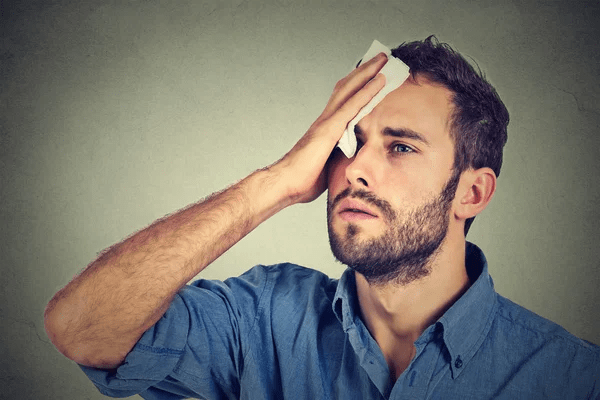
Why Does My Face Sweat So Much?: Tips And Treatments For Face Sweating
Table of Contents Do you ever feel like you’re the sweatiest person in the room?
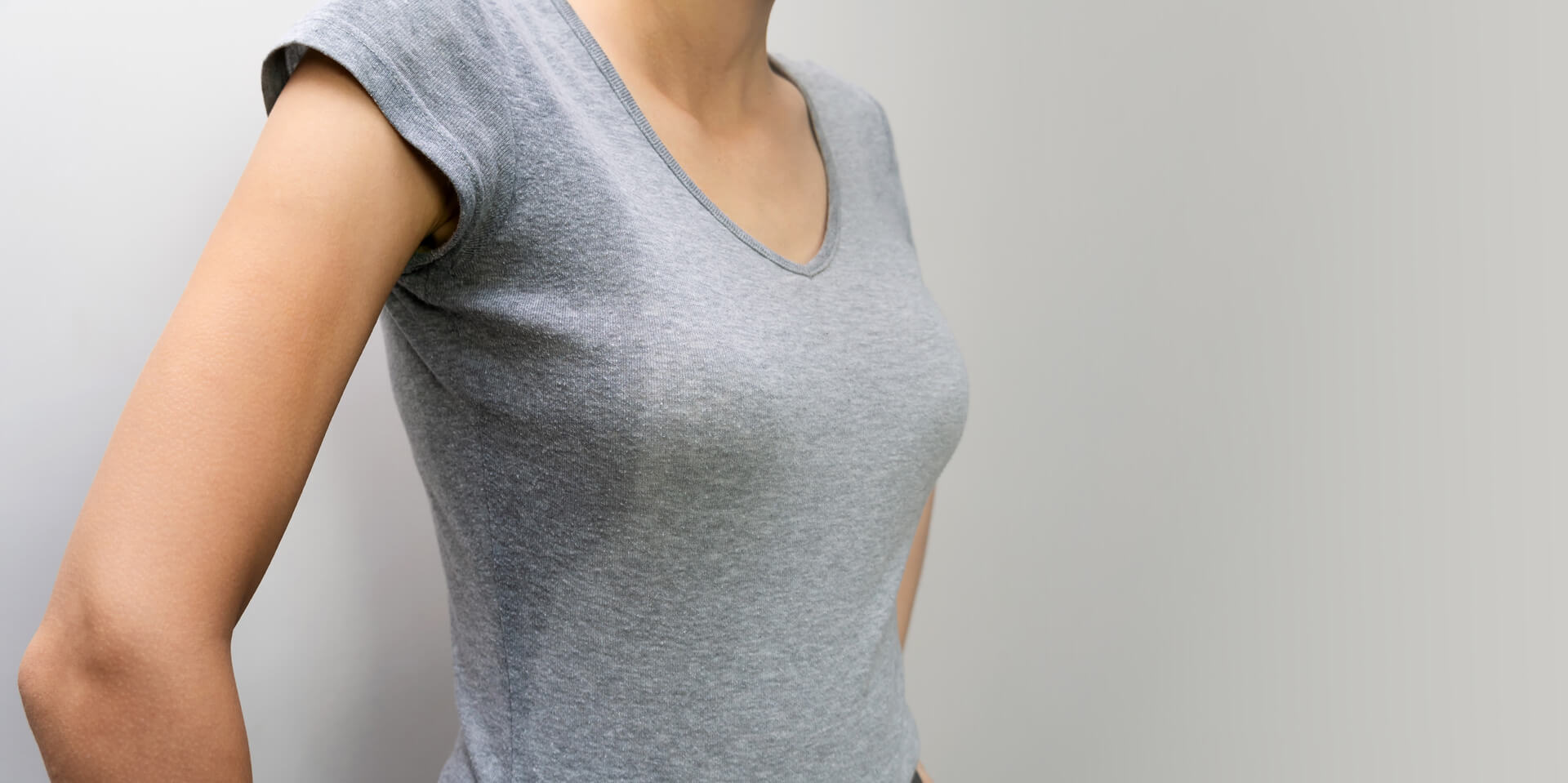
How to Stop Sweating Naturally – Huge List Tips & Home Remedies
Table of Contents For most people, sweating is a totally natural bodily function. For others,

Top 10 Best Deodorants For Sweaty Armpits
Do you struggle with sweaty armpits? Has your deodorant let you down when it comes




